 Search by Keyword
|
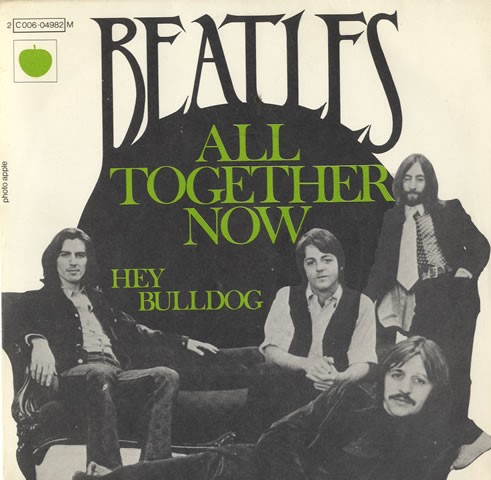
French picture sleeve
"ALL TOGETHER NOW"
(John Lennon – Paul McCartney)
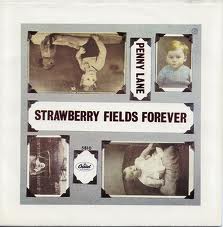 Between November 24th, 1966 and April 3rd, 1967, The Beatles worked tirelessly and intensely in the recording studio, creating the most elaborate album of their career, their masterpiece "Sgt. Pepper's Lonely Hearts Club Band," along with their earlier released groundbreaking single "Strawberry Fields Forever / Penny Lane." Their desire to use the recording studio as a creative platform for making the best album they could muster ended up making them feel artistically drained and ready for some light relief. However, there was work still to be done. Between November 24th, 1966 and April 3rd, 1967, The Beatles worked tirelessly and intensely in the recording studio, creating the most elaborate album of their career, their masterpiece "Sgt. Pepper's Lonely Hearts Club Band," along with their earlier released groundbreaking single "Strawberry Fields Forever / Penny Lane." Their desire to use the recording studio as a creative platform for making the best album they could muster ended up making them feel artistically drained and ready for some light relief. However, there was work still to be done.
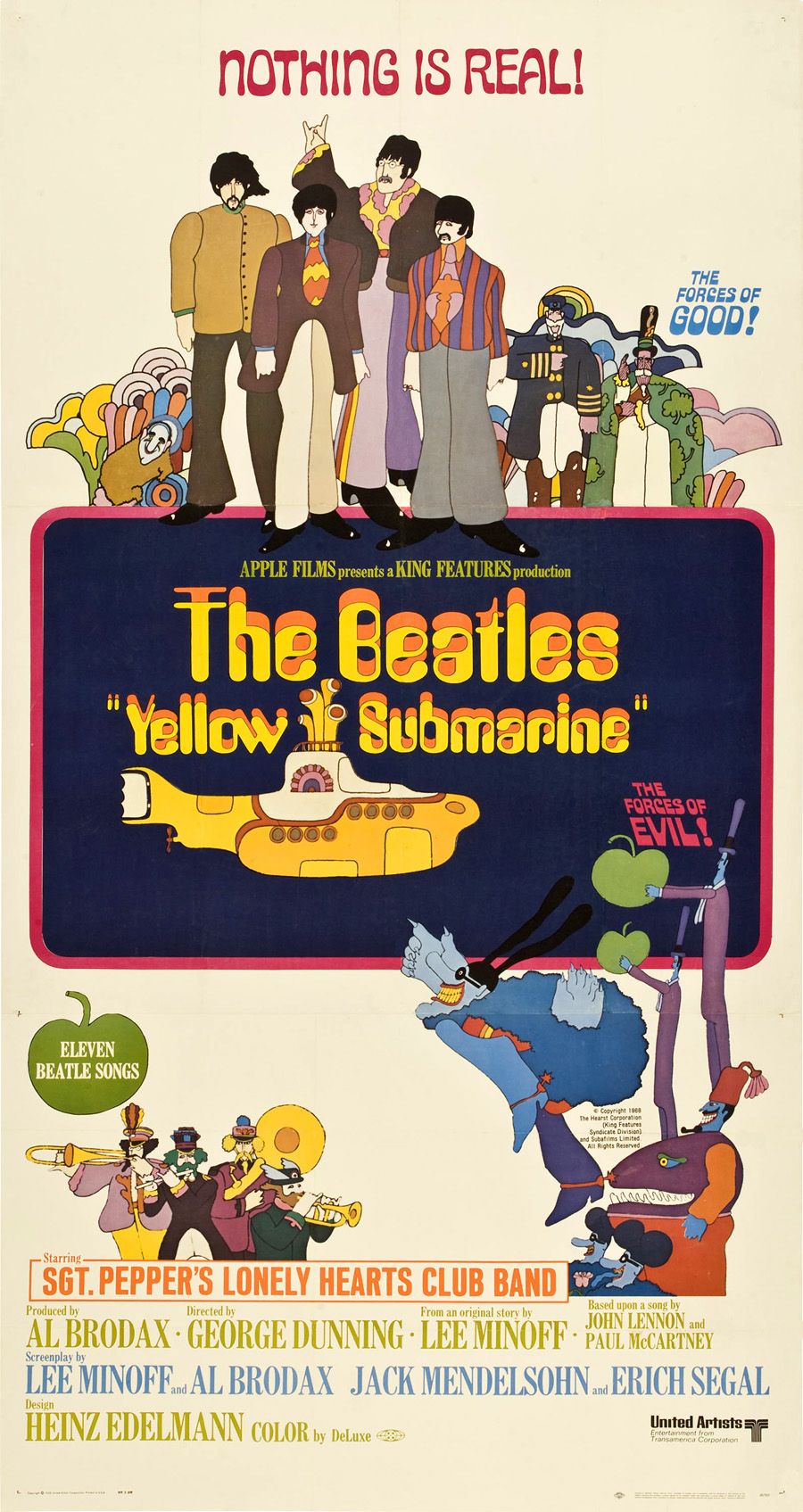 In 1966, an agreement was made between the group and United Artists for a handful of newly written and recorded songs to be used in an animated film that was now in the process of being produced, entitled “Yellow Submarine." In addition, Paul had already introduced his idea for the next Beatles endeavor, a self-produced film/music project entitled “Magical Mystery Tour.” With both these projects in mind, The Beatles immediately set out to provide the needed material to satisfy these demands but, given their undoubtedly exhausted state, set out to do so with a much more lighthearted attitude. In 1966, an agreement was made between the group and United Artists for a handful of newly written and recorded songs to be used in an animated film that was now in the process of being produced, entitled “Yellow Submarine." In addition, Paul had already introduced his idea for the next Beatles endeavor, a self-produced film/music project entitled “Magical Mystery Tour.” With both these projects in mind, The Beatles immediately set out to provide the needed material to satisfy these demands but, given their undoubtedly exhausted state, set out to do so with a much more lighthearted attitude.
During the nearly two month wait for the “Sgt. Pepper” album to be released, The Beatles entered various recording studios to record the required songs. With the “Pepper” tension gone, a frivolous, party atmosphere ensued which, on May 12th, 1967, resulted in the primary new track for the “Yellow Sumbarine” project, namely “All Together Now.”
Songwriting History
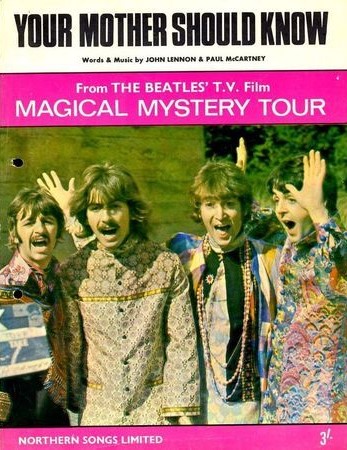 Paul was prone to periodically write songs that emulated the music-hall style of a by-gone era, a genre of music that he grew up hearing and continued to have a fondness for. He had recently recorded "When I'm Sixty-Four" in that vein and was soon to venture there again with "Your Mother Should Know" and "Honey Pie." Paul's book "Many Years From Now" identified "All Together Now" as also being written "in the music-hall tradition." Paul was prone to periodically write songs that emulated the music-hall style of a by-gone era, a genre of music that he grew up hearing and continued to have a fondness for. He had recently recorded "When I'm Sixty-Four" in that vein and was soon to venture there again with "Your Mother Should Know" and "Honey Pie." Paul's book "Many Years From Now" identified "All Together Now" as also being written "in the music-hall tradition."
In his book, Paul reminisces about his recollections regarding this style of music: “When they were winging a song, to encourage the audience to join in they'd say, 'All together now!,' so I just took it and read another meaning into it, of we are all together now. So I used the dual meaning.”
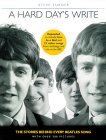 One can easily see the similarity in the verses' lyrics to the “one, two, buckle my shoe” nursery rhyme, but the inspiration possibly goes a little deeper. Folklorist Iona Opie, the editor of “The Oxford Dictionary Of Nursery Rhymes,” gives her input as to Paul's inspiration for the lyrical content of the verses, her quote taken from Steve Turner's book “A Hard Day's Write.” “I can't distinguish any particular influence on 'All Together Now.' So many ABC rhymes exist and there are counting rhymes like 'One, two, three four, Mary at the cottage door...' which come pretty close. The song seems to come out of a universal subconscious.” One can easily see the similarity in the verses' lyrics to the “one, two, buckle my shoe” nursery rhyme, but the inspiration possibly goes a little deeper. Folklorist Iona Opie, the editor of “The Oxford Dictionary Of Nursery Rhymes,” gives her input as to Paul's inspiration for the lyrical content of the verses, her quote taken from Steve Turner's book “A Hard Day's Write.” “I can't distinguish any particular influence on 'All Together Now.' So many ABC rhymes exist and there are counting rhymes like 'One, two, three four, Mary at the cottage door...' which come pretty close. The song seems to come out of a universal subconscious.”
 Paul recounts his general inspiration in this way: “It's really a children's song. I had a few young relatives and I would sing songs for them. I used to do a song for kids called 'Jumping Round The Room,' very similar to 'All Together Now,' and then it would be 'lying on your backs,' all the kids would have to lie down, then it would be 'skipping round the room,' 'jumping in the air.' It's a play away command song for children. It would be in G, very very simple chords, only a couple of chords, so that's what this is. There's a little subcurrent to it but it's just a sing-along really. A bit of a throwaway.” As music critic Tom Maginnis of AllMusic suggests, this song was written “to match the same lighthearted spirit” of the animated film it was intended for. Paul recounts his general inspiration in this way: “It's really a children's song. I had a few young relatives and I would sing songs for them. I used to do a song for kids called 'Jumping Round The Room,' very similar to 'All Together Now,' and then it would be 'lying on your backs,' all the kids would have to lie down, then it would be 'skipping round the room,' 'jumping in the air.' It's a play away command song for children. It would be in G, very very simple chords, only a couple of chords, so that's what this is. There's a little subcurrent to it but it's just a sing-along really. A bit of a throwaway.” As music critic Tom Maginnis of AllMusic suggests, this song was written “to match the same lighthearted spirit” of the animated film it was intended for.
 Most would assume that the song was written in the studio on May 12th, 1967 while it was being recorded, but engineer Geoff Emerick, in his book "Here, There And Everywhere," suggests otherwise. "Paul obviously had worked the song out well in advance and knew exactly what he wanted," Emerick insists, "all the singing and playng is spot-on, despite the fact that it's not that strong of a song." John seemed to have had a slight hand in its writing as well. The bridge, which deviates from the two-chord framework that Paul mentions above, includes the Lennon sung lyrics “sail the ship,” “chop the tree,” “skip the rope” and “look at me,” undoubtedly contributed by the singer himself as was usually the case at that time in the Lennon / McCartney songwriting partnership. While this song is hardly the best example of a “Lennon / McCartney” collaboration, it appears to be a collaboration nonetheless. In any event, we can safely suggest that the song was written sometime in early May of 1967. Most would assume that the song was written in the studio on May 12th, 1967 while it was being recorded, but engineer Geoff Emerick, in his book "Here, There And Everywhere," suggests otherwise. "Paul obviously had worked the song out well in advance and knew exactly what he wanted," Emerick insists, "all the singing and playng is spot-on, despite the fact that it's not that strong of a song." John seemed to have had a slight hand in its writing as well. The bridge, which deviates from the two-chord framework that Paul mentions above, includes the Lennon sung lyrics “sail the ship,” “chop the tree,” “skip the rope” and “look at me,” undoubtedly contributed by the singer himself as was usually the case at that time in the Lennon / McCartney songwriting partnership. While this song is hardly the best example of a “Lennon / McCartney” collaboration, it appears to be a collaboration nonetheless. In any event, we can safely suggest that the song was written sometime in early May of 1967.
Recording History
The Beatles were undoubtedly on a high caused by the first new "Yellow Submarine" film song they recorded on May 11th, 1967 at Olympic Sound Studios. The song was "Baby, You're A Rich Man" (originally intended for inclusion in the film) and it was fully recorded and mixed for mono in a single session.
 As they entered EMI Studio Two the following day, May 12th, 1967, they obviously wanted to quickly knock out the second song they intended for the animated film, this being “All Together Now.” They arrived in the studio around 7 pm and immediately got to work at completely recording and mono mixing the entire song. As they entered EMI Studio Two the following day, May 12th, 1967, they obviously wanted to quickly knock out the second song they intended for the animated film, this being “All Together Now.” They arrived in the studio around 7 pm and immediately got to work at completely recording and mono mixing the entire song.
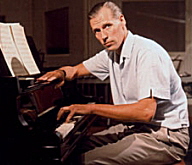 However, a different atmosphere was present because of one particular person who wasn't present. “In mid-May, (producer) George Martin took off for a two-week holiday in the south of France,” Geoff Emerick relates. “The Beatles nonetheless soldiered on without him, and I was officially listed on the tape box as both producer and engineer of...'All Together Now.'...Frankly, George going on vacation in the middle of these sessions did not go down well in anybody's book. We were all tired (from recording the 'Sgt. Pepper' album) yet he was the only one taking time off. By this point, I doubt very much if the band were crediting George Martin with their success anyway. In fact, they probably welcomed the opportunity to get some work done without him.” However, a different atmosphere was present because of one particular person who wasn't present. “In mid-May, (producer) George Martin took off for a two-week holiday in the south of France,” Geoff Emerick relates. “The Beatles nonetheless soldiered on without him, and I was officially listed on the tape box as both producer and engineer of...'All Together Now.'...Frankly, George going on vacation in the middle of these sessions did not go down well in anybody's book. We were all tired (from recording the 'Sgt. Pepper' album) yet he was the only one taking time off. By this point, I doubt very much if the band were crediting George Martin with their success anyway. In fact, they probably welcomed the opportunity to get some work done without him.”
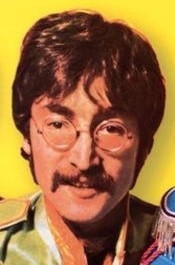 Geoff Emerick continues: “Things were definitely more relaxed when George Martin wasn't around. There was always a certain protocol when he was at a session: we in the control room felt that we had to be on our best behavior, and even The Beatles seemed slightly constrained by his presence at times. When he wasn't there, we'd all let our hair down and have a bit of fun. There was just a different dynamic, and you can hear it...(the song was) a lot looser, a lot more up, than anything they'd recorded in quite a while. Lennon, in fact, made a comment at the start of the 'All Together Now' session to the effect of 'Well, now that the schoolmaster's out, we kids finally get a chance to play.'” Geoff Emerick continues: “Things were definitely more relaxed when George Martin wasn't around. There was always a certain protocol when he was at a session: we in the control room felt that we had to be on our best behavior, and even The Beatles seemed slightly constrained by his presence at times. When he wasn't there, we'd all let our hair down and have a bit of fun. There was just a different dynamic, and you can hear it...(the song was) a lot looser, a lot more up, than anything they'd recorded in quite a while. Lennon, in fact, made a comment at the start of the 'All Together Now' session to the effect of 'Well, now that the schoolmaster's out, we kids finally get a chance to play.'”
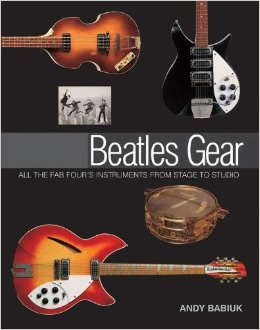 Nine takes of the rhythm track were recorded, the last being deemed best which was then ready for overdubs. Although sources disagree slightly as to instrumentation, Geoff Emerick specifies that Paul “sang the final lead vocal – not a guide – during the recording of the backing track while accompanying himself on acoustic guitar.” A second acoustic guitar is heard which, according to Andy Babiuk's book “Beatles Gear,” was George on his usual Gibson electric acoustic. John sang his lead vocal part on the rhythm track as well, undoubtedly playing along on another instrument simulaneously, such as the banjo. Ringo also played some sporadic drum parts on the rhythm track. Nine takes of the rhythm track were recorded, the last being deemed best which was then ready for overdubs. Although sources disagree slightly as to instrumentation, Geoff Emerick specifies that Paul “sang the final lead vocal – not a guide – during the recording of the backing track while accompanying himself on acoustic guitar.” A second acoustic guitar is heard which, according to Andy Babiuk's book “Beatles Gear,” was George on his usual Gibson electric acoustic. John sang his lead vocal part on the rhythm track as well, undoubtedly playing along on another instrument simulaneously, such as the banjo. Ringo also played some sporadic drum parts on the rhythm track.
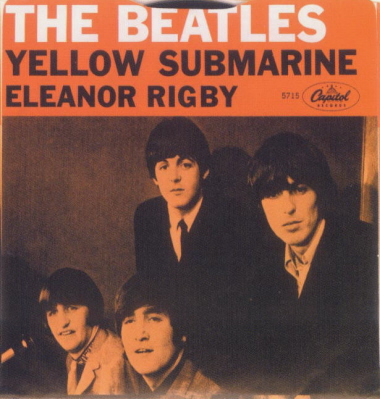 “Interesting,” Geoff Emerick continues, “the last time The Beatles had done a recording in George (Martin)'s absence was the song 'Yellow Submarine,' during the 'Revolver' sessions, which was remarkably similar to 'All Together Now' in both content and style. And both times, The Beatles invited friends in to sing along and create a party atmosphere...It was a remarkably productive night, and it was quite an easy session too, even though there were a lot of overdubs. A lot of it had to be played live, because they wanted the tempo to speed up from beginning to end.” “Interesting,” Geoff Emerick continues, “the last time The Beatles had done a recording in George (Martin)'s absence was the song 'Yellow Submarine,' during the 'Revolver' sessions, which was remarkably similar to 'All Together Now' in both content and style. And both times, The Beatles invited friends in to sing along and create a party atmosphere...It was a remarkably productive night, and it was quite an easy session too, even though there were a lot of overdubs. A lot of it had to be played live, because they wanted the tempo to speed up from beginning to end.”
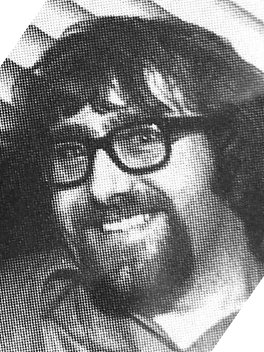 Regarding the overdubs, Paul put in a bass part, Ringo pounded a bass drum, and John reprised his early Beatles role on the harmonica. Then, as Mark Lewisohn's book “The Beatles Recording Sessions” states, they did “much raiding of the studio two trap room for miscellaneous bits of sound effects equipment.” The effects heard on the recording reportedly include triangle, finger cymbals, ukulele, zil, banjo and a Harpo Marx-like horn. All four Beatles also performed group background singing along with other guests that were present, presumably roadies Mal Evans and Neil Aspinall among them, as well as hand-clapping and cheers. As the above "Recording Sessions" book mentions, the end result featured the small gathered crowd repeating “the three words of the title...almost 50 times in a little over two minutes.” Regarding the overdubs, Paul put in a bass part, Ringo pounded a bass drum, and John reprised his early Beatles role on the harmonica. Then, as Mark Lewisohn's book “The Beatles Recording Sessions” states, they did “much raiding of the studio two trap room for miscellaneous bits of sound effects equipment.” The effects heard on the recording reportedly include triangle, finger cymbals, ukulele, zil, banjo and a Harpo Marx-like horn. All four Beatles also performed group background singing along with other guests that were present, presumably roadies Mal Evans and Neil Aspinall among them, as well as hand-clapping and cheers. As the above "Recording Sessions" book mentions, the end result featured the small gathered crowd repeating “the three words of the title...almost 50 times in a little over two minutes.”
 Once the overdubs were complete, Geoff Emerick, engineer Richard Lush and The Beatles themselves worked at creating the mono mix, the last of the six attempts being deemed the best. This ended the session at 12:30 am the following morning. Once the overdubs were complete, Geoff Emerick, engineer Richard Lush and The Beatles themselves worked at creating the mono mix, the last of the six attempts being deemed the best. This ended the session at 12:30 am the following morning.
On November 15th, 1967, Geoff Emerick and Richard Lush returned again to the song but only to make a tape copy to be given to the producers of the “Yellow Submarine” film.
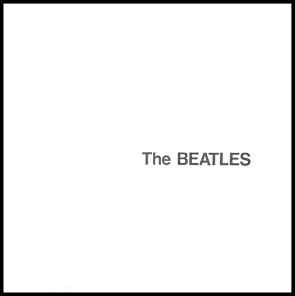 Since the “Yellow Submarine” soundtrack album was pushed back a while in order for the “White Album” to be released first, a stereo mix of “All Together Now” wasn't made until October 29th, 1968. This was done in the control room of EMI Studio Three by Geoff Emerick and engineer Graham Kirkby, only one attempt needed to nail the perfect stereo mix. Since the “Yellow Submarine” soundtrack album was pushed back a while in order for the “White Album” to be released first, a stereo mix of “All Together Now” wasn't made until October 29th, 1968. This was done in the control room of EMI Studio Three by Geoff Emerick and engineer Graham Kirkby, only one attempt needed to nail the perfect stereo mix.
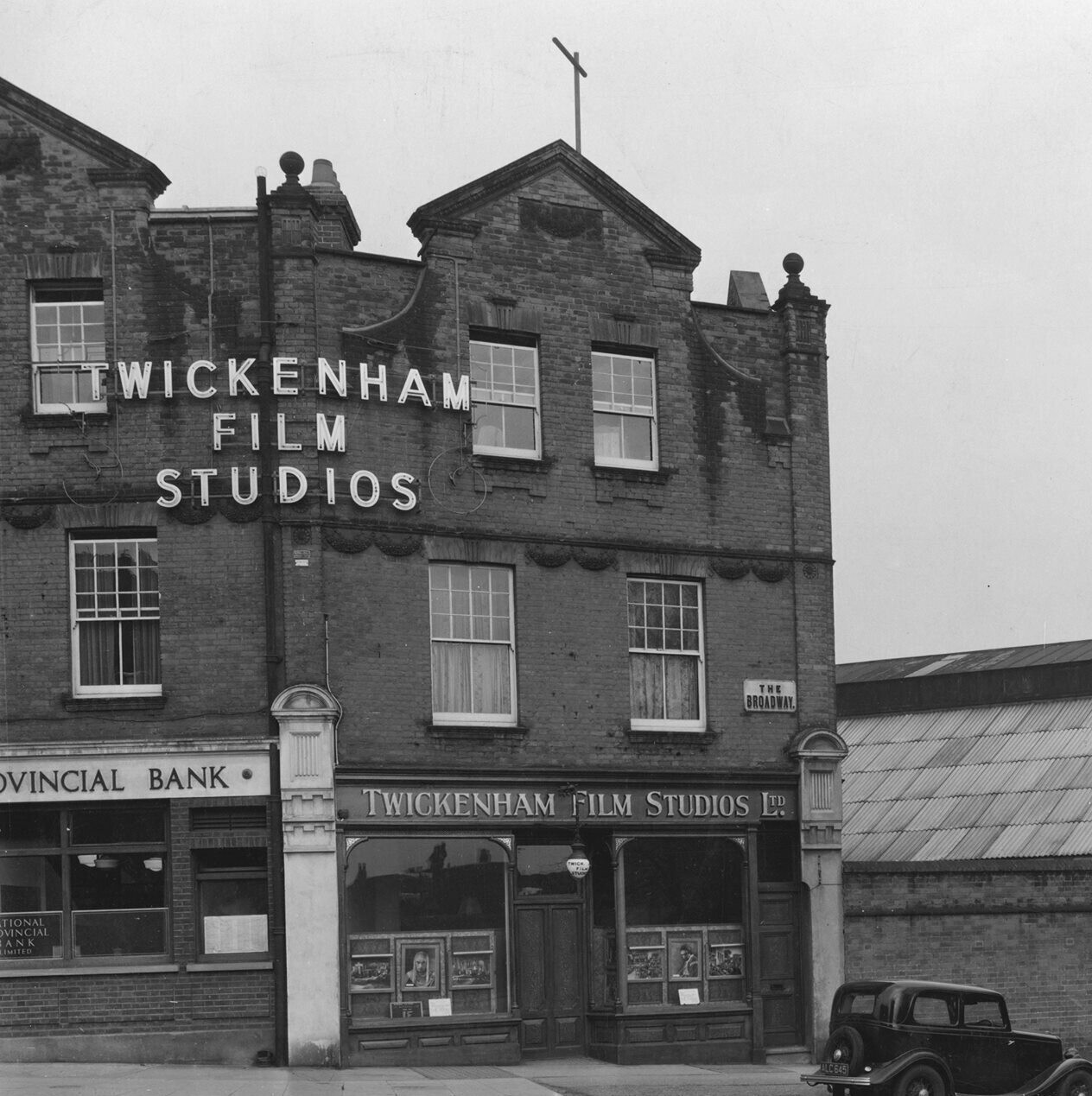 The Beatles actually touched on "All Together Now" once again in a studio setting, this being on January 9th, 1969 during rehearsals at Twickenham Film Studios for what became the "Let It Be" album and movie. After goofing around with cover songs by The Animals, Marvin Gaye, Elvis and others, they slipped into an impromptu version of "All Together Now" which was too insignificant to ever be officially released in any form. The Beatles actually touched on "All Together Now" once again in a studio setting, this being on January 9th, 1969 during rehearsals at Twickenham Film Studios for what became the "Let It Be" album and movie. After goofing around with cover songs by The Animals, Marvin Gaye, Elvis and others, they slipped into an impromptu version of "All Together Now" which was too insignificant to ever be officially released in any form.
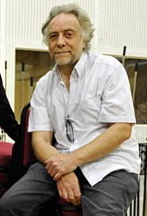 This is not to say that it couldn't be improved upon. Sometime in 1999, the engineering team of Peter Cobbin, Paul Hicks, Mirek Stiles, Allan Rouse, Peter Mew and Steve Rooke revisited the master tape of “All Together Now” to create a new stereo mix for inclusion on the “Yellow Submarine Songtrack” album, this clearer mix being featured also on the newly mastered re-release of the movie that year on VHS and DVD. This is not to say that it couldn't be improved upon. Sometime in 1999, the engineering team of Peter Cobbin, Paul Hicks, Mirek Stiles, Allan Rouse, Peter Mew and Steve Rooke revisited the master tape of “All Together Now” to create a new stereo mix for inclusion on the “Yellow Submarine Songtrack” album, this clearer mix being featured also on the newly mastered re-release of the movie that year on VHS and DVD.
Song Structure and Style
The structure for "All Together Now" consists of 'verse/ verse/ bridge/ chorus/ verse/ chorus/ chorus/ bridge/ chorus/ chorus/ chorus' (or aabcaccbccc) with a simple introduction thrown in at the beginning. All of these components happen in rapid fire succession, progressively increasing in speed, in order to squeeze it all in in just over two minutes with no time for an instrumental break or solo.
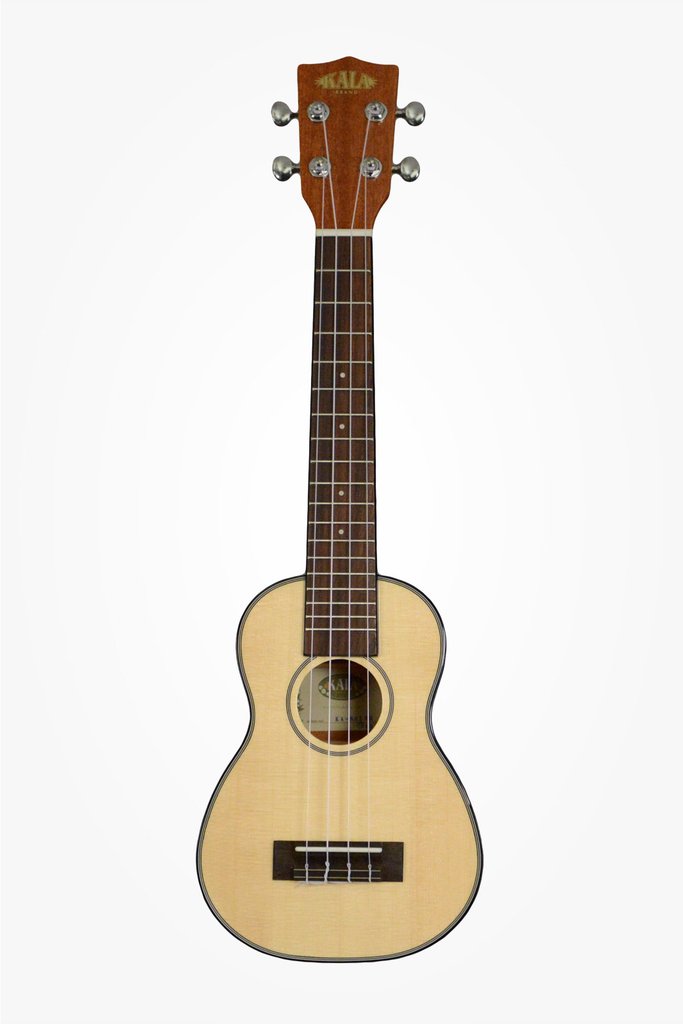 The introduction is four measures long and consists entirely of Paul on acoustic guitar playing a rhythmic beat to set the stage for the song, a simple pull chord being played just before the first down beat. After this, the first verse is heard, which is also four measures in length as all of the verses are. Paul's acoustic guitar and lead vocal are the only thing heard in this verse. The third measure includes a chord change which is performed on an anticipated beat on the word “ten.” The second verse follows immediately, which is a veritable repeat of the first instrumentally for the first three measures except for the addition of what sounds like John on ukulele. Paul is also heard providing a lower harmony to his lead vocal as an overdub starting in measure two on the words “can I bring my friend to tea?” The last measure includes an introduction to the bridge that follows, this consisting of the inclusion of bass guitar and John, Paul and George singing “bump, bump, bump.” The introduction is four measures long and consists entirely of Paul on acoustic guitar playing a rhythmic beat to set the stage for the song, a simple pull chord being played just before the first down beat. After this, the first verse is heard, which is also four measures in length as all of the verses are. Paul's acoustic guitar and lead vocal are the only thing heard in this verse. The third measure includes a chord change which is performed on an anticipated beat on the word “ten.” The second verse follows immediately, which is a veritable repeat of the first instrumentally for the first three measures except for the addition of what sounds like John on ukulele. Paul is also heard providing a lower harmony to his lead vocal as an overdub starting in measure two on the words “can I bring my friend to tea?” The last measure includes an introduction to the bridge that follows, this consisting of the inclusion of bass guitar and John, Paul and George singing “bump, bump, bump.”
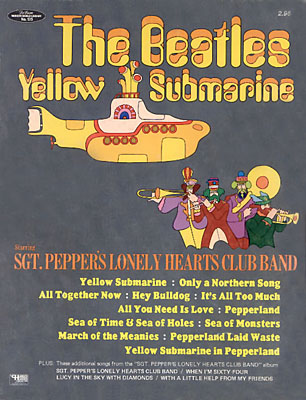 The bridge is five measures long and includes the instrumentation heard thus far along with Ringo on slight drums and overdubbed bass drum hits that accent the “bump, bump, bump” vocals that are heard at the beginning of the first four measures. John takes over lead vocals for the bridge, singing a three word phrase after every “bump, bump, bump,” such as “sail the ship,” etc. Some sort of rattling percussion is also heard in the background of the bridge as well, from some unidentified instrument found in the sound effects cupboard. Three part Beatles harmony kicks in for John's final three-word phrase in the fourth measure, namely, “look at meeeeeeeee” which extends throughout the fifth measure as a segue into the chorus that follows. John's overdubbed harmonica is debuted in the fifth measure as well, along with Paul instructing everyone to sing along in the following chorus. The bridge is five measures long and includes the instrumentation heard thus far along with Ringo on slight drums and overdubbed bass drum hits that accent the “bump, bump, bump” vocals that are heard at the beginning of the first four measures. John takes over lead vocals for the bridge, singing a three word phrase after every “bump, bump, bump,” such as “sail the ship,” etc. Some sort of rattling percussion is also heard in the background of the bridge as well, from some unidentified instrument found in the sound effects cupboard. Three part Beatles harmony kicks in for John's final three-word phrase in the fourth measure, namely, “look at meeeeeeeee” which extends throughout the fifth measure as a segue into the chorus that follows. John's overdubbed harmonica is debuted in the fifth measure as well, along with Paul instructing everyone to sing along in the following chorus.
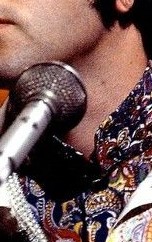 The chorus is four measures long and features all instrumentation heard thus far in the song except for the bass drum accents of the bridge. All four Beatles, as well as all invited guests sing the song's title in unison four times, one in each measure, with Paul interjecting a quick “all together now” in between each. The chorus is four measures long and features all instrumentation heard thus far in the song except for the bass drum accents of the bridge. All four Beatles, as well as all invited guests sing the song's title in unison four times, one in each measure, with Paul interjecting a quick “all together now” in between each.
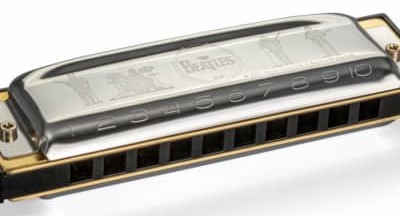 After a quietly heard “all together now” from Paul in the fourth measure, the third and final verse is heard which includes the acoustic guitar, ukulele, harmonica, bass and drum instrumentation. Paul's lyrics this time include the provocative line “can I take my friend to bed,” which is snuck in virtually unnoticed within the framework of a childrens's song. Paul also adds a touch of accent to certain words in this verse, most noticeable on the words “orange” and “blue.” This time around, since a bridge is not heard next, Paul includes another “all together now” encouragement, followed quickly by someone exclaiming “oh,” to usher in two more consecutive choruses. After a quietly heard “all together now” from Paul in the fourth measure, the third and final verse is heard which includes the acoustic guitar, ukulele, harmonica, bass and drum instrumentation. Paul's lyrics this time include the provocative line “can I take my friend to bed,” which is snuck in virtually unnoticed within the framework of a childrens's song. Paul also adds a touch of accent to certain words in this verse, most noticeable on the words “orange” and “blue.” This time around, since a bridge is not heard next, Paul includes another “all together now” encouragement, followed quickly by someone exclaiming “oh,” to usher in two more consecutive choruses.
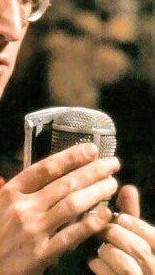 These choruses are virtual repeats of the first but with more sound effects added in, such as the horn sound in the fourth measure of the first chorus and the second measure of the second chorus, and the noticeable increase in tempo and excitement of the vocalists by the time the second chorus kicks in. One difference between the these two consecutive choruses is that the unison singing of the song's title is harmonized in the latter chorus. These choruses are virtual repeats of the first but with more sound effects added in, such as the horn sound in the fourth measure of the first chorus and the second measure of the second chorus, and the noticeable increase in tempo and excitement of the vocalists by the time the second chorus kicks in. One difference between the these two consecutive choruses is that the unison singing of the song's title is harmonized in the latter chorus.
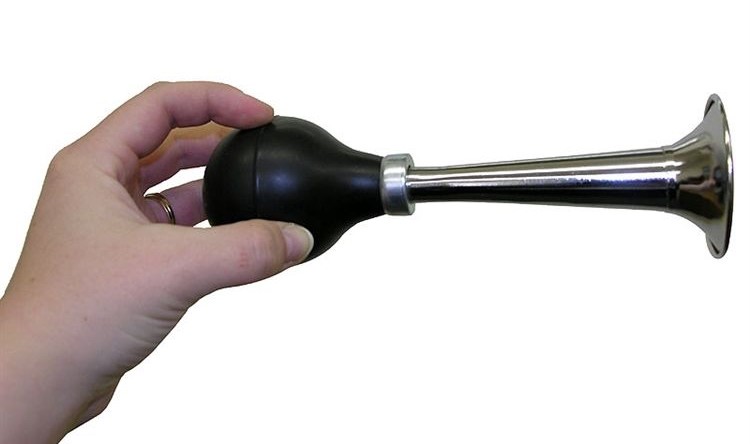 The second and final bridge comes next, which is a virtual repeat of the first except for the increase in tempo and more extraneous voices and slight sound effect additions. Then come three consecutive choruses with a steadily increasing tempo and more exaggerated vocalizations, especially from Paul. The second chorus introduces group hand-clapping while the clanking and shaking of sound effects increases throughout all of the choruses, not to mention the excitable horn honker. By the end of the third chorus, which is six measures long to add two extra measures that act as the song's conclusion, the song is at breakneck speed. Beginning with the fourth measure of this final chorus, the primary feature is all of the vocalists singing “all together noooooooooow” at the top of their voices in a labored fashion with all sound effects wailing. The final beat of the song is the two-beat of the sixth measure, which brings out spontaneous cheers and applause from all involved, a couple reverbed horn honks having the final word. The second and final bridge comes next, which is a virtual repeat of the first except for the increase in tempo and more extraneous voices and slight sound effect additions. Then come three consecutive choruses with a steadily increasing tempo and more exaggerated vocalizations, especially from Paul. The second chorus introduces group hand-clapping while the clanking and shaking of sound effects increases throughout all of the choruses, not to mention the excitable horn honker. By the end of the third chorus, which is six measures long to add two extra measures that act as the song's conclusion, the song is at breakneck speed. Beginning with the fourth measure of this final chorus, the primary feature is all of the vocalists singing “all together noooooooooow” at the top of their voices in a labored fashion with all sound effects wailing. The final beat of the song is the two-beat of the sixth measure, which brings out spontaneous cheers and applause from all involved, a couple reverbed horn honks having the final word.
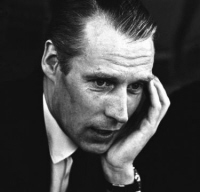 While George Martin's assertion that the newly recorded songs for the “Yellow Submarine” soundtrack “scraped the bottom of the Beatle music barrel as far as new material was concerned,” they did decide to have some fun recording them, making the best of the situation. Their attitude apparently was, 'Well, if we have to do this, let's have some fun doing it.' With all four Beatles cooperative and in a jovial mood, the recording of “All Together Now” resulted in a splendid time being had by all. While George Martin's assertion that the newly recorded songs for the “Yellow Submarine” soundtrack “scraped the bottom of the Beatle music barrel as far as new material was concerned,” they did decide to have some fun recording them, making the best of the situation. Their attitude apparently was, 'Well, if we have to do this, let's have some fun doing it.' With all four Beatles cooperative and in a jovial mood, the recording of “All Together Now” resulted in a splendid time being had by all.
American Releases
On January 13th, 1969, just a month and a half after the Beatles "White Album" was released, the "Yellow Submarine" soundtrack album was on the market in the US. "All Together Now" was the third song on side one and was a fun highlight of the collection which continued the jovial nature of the title track that started off the album.
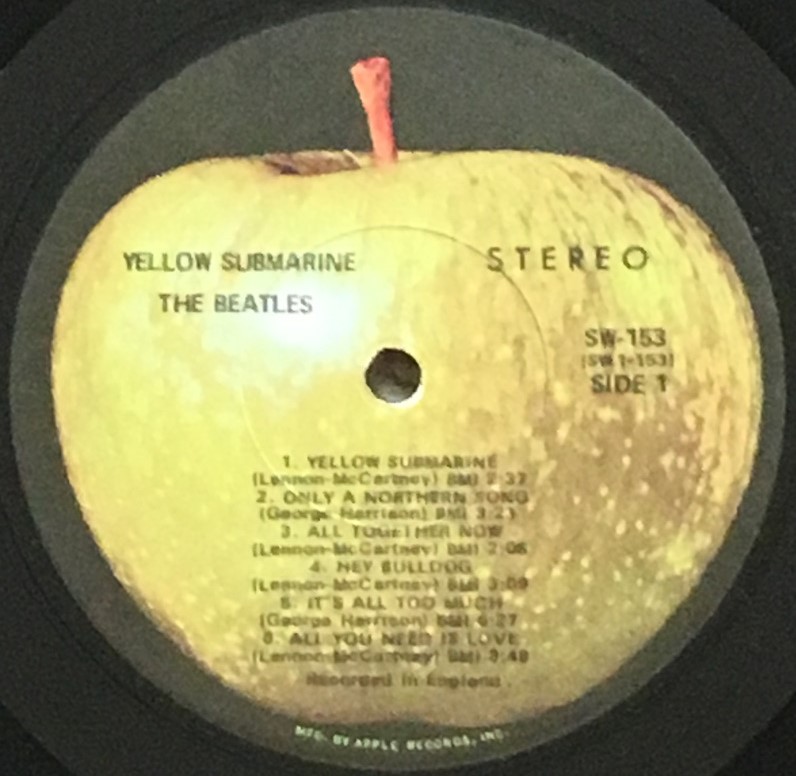 Since mono albums were no longer being manufactured in America by this time, the album was only issued in stereo here unlike in Britain where both mono and stereo versions were made available. This was also the second Beatles album released on their own Apple Records label. It peaked at the #2 spot on the Billboard album chart just under the “White Album.” The album first appeared on compact disc on August 25th, 1987 and then in a remastered form on September 9th, 2009. Since mono albums were no longer being manufactured in America by this time, the album was only issued in stereo here unlike in Britain where both mono and stereo versions were made available. This was also the second Beatles album released on their own Apple Records label. It peaked at the #2 spot on the Billboard album chart just under the “White Album.” The album first appeared on compact disc on August 25th, 1987 and then in a remastered form on September 9th, 2009.
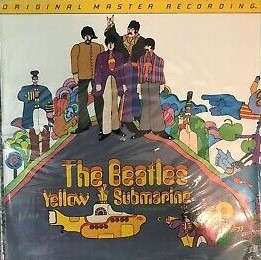 One interesting US release of the “Yellow Submarine” soundtrack album occurred in November of 1986. This was the "Original Master Recording" vinyl edition released through Mobile Fidelity Sound Lab in Chatsworth, California prepared utilizing half-speed mastering technology from the original master tape on loan from EMI. This version of the album was only available for a short time and is quite collectible today. One interesting US release of the “Yellow Submarine” soundtrack album occurred in November of 1986. This was the "Original Master Recording" vinyl edition released through Mobile Fidelity Sound Lab in Chatsworth, California prepared utilizing half-speed mastering technology from the original master tape on loan from EMI. This version of the album was only available for a short time and is quite collectible today.
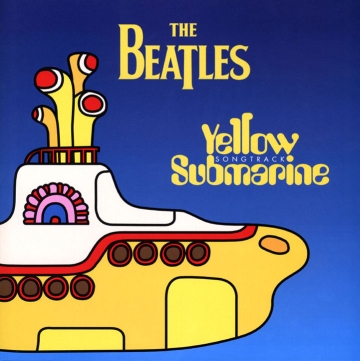 The newly mixed stereo version of the song, as mentioned above, was made available on September 13th, 1999 on the album “Yellow Submarine Songtrack,” a release that coincided with the re-release of the animated movie on VHS and DVD. The album contained all of the Beatles songs contained in the film, all of which were treated to dramatic remixing for amazing effect. The newly mixed stereo version of the song, as mentioned above, was made available on September 13th, 1999 on the album “Yellow Submarine Songtrack,” a release that coincided with the re-release of the animated movie on VHS and DVD. The album contained all of the Beatles songs contained in the film, all of which were treated to dramatic remixing for amazing effect.
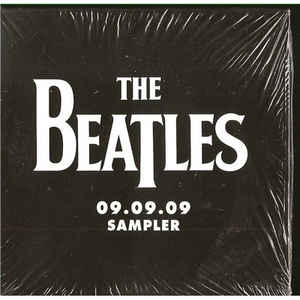 On September 9th, 2009, the mono mix of “All Together Now” was included in the CD box set “The Beatles In Mono” on an album entitled “Mono Masters," the first time this mono mix was released in the US. Also released on September 9th, 2009, in promotion of the remastered Beatles catalog, the "09.09.09 Sampler" was distributed to retailers and radio programmers, "All Together Now" being featured therein. The vinyl edition of the box set was first released on September 9th, 2014. On September 9th, 2009, the mono mix of “All Together Now” was included in the CD box set “The Beatles In Mono” on an album entitled “Mono Masters," the first time this mono mix was released in the US. Also released on September 9th, 2009, in promotion of the remastered Beatles catalog, the "09.09.09 Sampler" was distributed to retailers and radio programmers, "All Together Now" being featured therein. The vinyl edition of the box set was first released on September 9th, 2014.
Live Performances
The Beatles never performed the song live but, on his "Out There" tour which ran from May 4th, 2013 in Belo Horizonte, Brazil to October 22nd, 2015 in Buffalo, New York, Paul McCartney included the song in his set list, habitually announcing it as "for the kids."
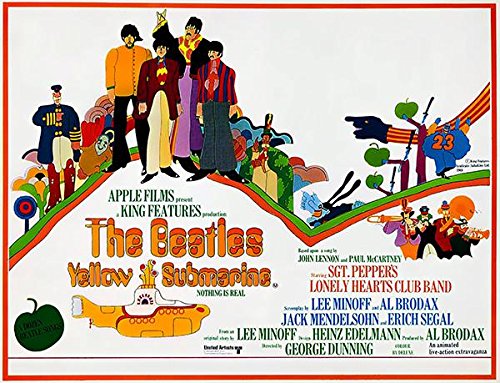 Also to be mentioned here is its twice inclusion in the movie “Yellow Submarine,” which premiered here in the US on November 13th, 1968. The first time the song is heard in the film is during an animated sequence within the storyline of the movie. Then, at the very end of the film, actual footage of The Beatles reciting humorous dialog ends with them counting off a truncated version of “All Together Now” ending with the title of the song appearing in print on the big screen in eleven different languages. This makes for a fitting conclusion to a children's movie, whetting the appetite of Beatles fans, young and old, to get their hands on the soon-to-be-released soundtrack album that contained this simple but infectious song. Also to be mentioned here is its twice inclusion in the movie “Yellow Submarine,” which premiered here in the US on November 13th, 1968. The first time the song is heard in the film is during an animated sequence within the storyline of the movie. Then, at the very end of the film, actual footage of The Beatles reciting humorous dialog ends with them counting off a truncated version of “All Together Now” ending with the title of the song appearing in print on the big screen in eleven different languages. This makes for a fitting conclusion to a children's movie, whetting the appetite of Beatles fans, young and old, to get their hands on the soon-to-be-released soundtrack album that contained this simple but infectious song.
Conclusion
With all of the painstaking work The Beatles put into recording the "Sgt. Pepper" album, they needed to decompress and/or blow off steam to relieve the pressure. "After the LP had been completed," Mark Lewisohn explains in his book "The Beatles Recording Sessions," "The Beatles' recordings - throughout the remainder of April, all of May and early June, for example - did display a startling lack of cohesion and enthusiasm, as though they had injected their all into 'Sgt. Pepper' and now wanted to take things easy."
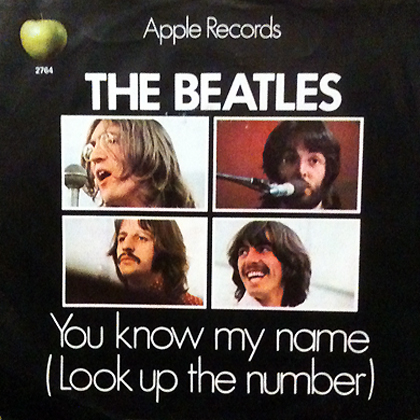 It was during this time period that they twice entered the studio to record a full session worth of untitled “downright amateurish instrumental jams,” as Mark Lewisohn describes them, just to blow off steam, one of these sessions occurring on the actual day that “Sgt. Pepper” was being released! It was also during this time that they put much effort into recording a silly composition entitled “You Know My Name (Look Up The Number),” which didn't end up getting released until March of 1970. It was during this time period that they twice entered the studio to record a full session worth of untitled “downright amateurish instrumental jams,” as Mark Lewisohn describes them, just to blow off steam, one of these sessions occurring on the actual day that “Sgt. Pepper” was being released! It was also during this time that they put much effort into recording a silly composition entitled “You Know My Name (Look Up The Number),” which didn't end up getting released until March of 1970.
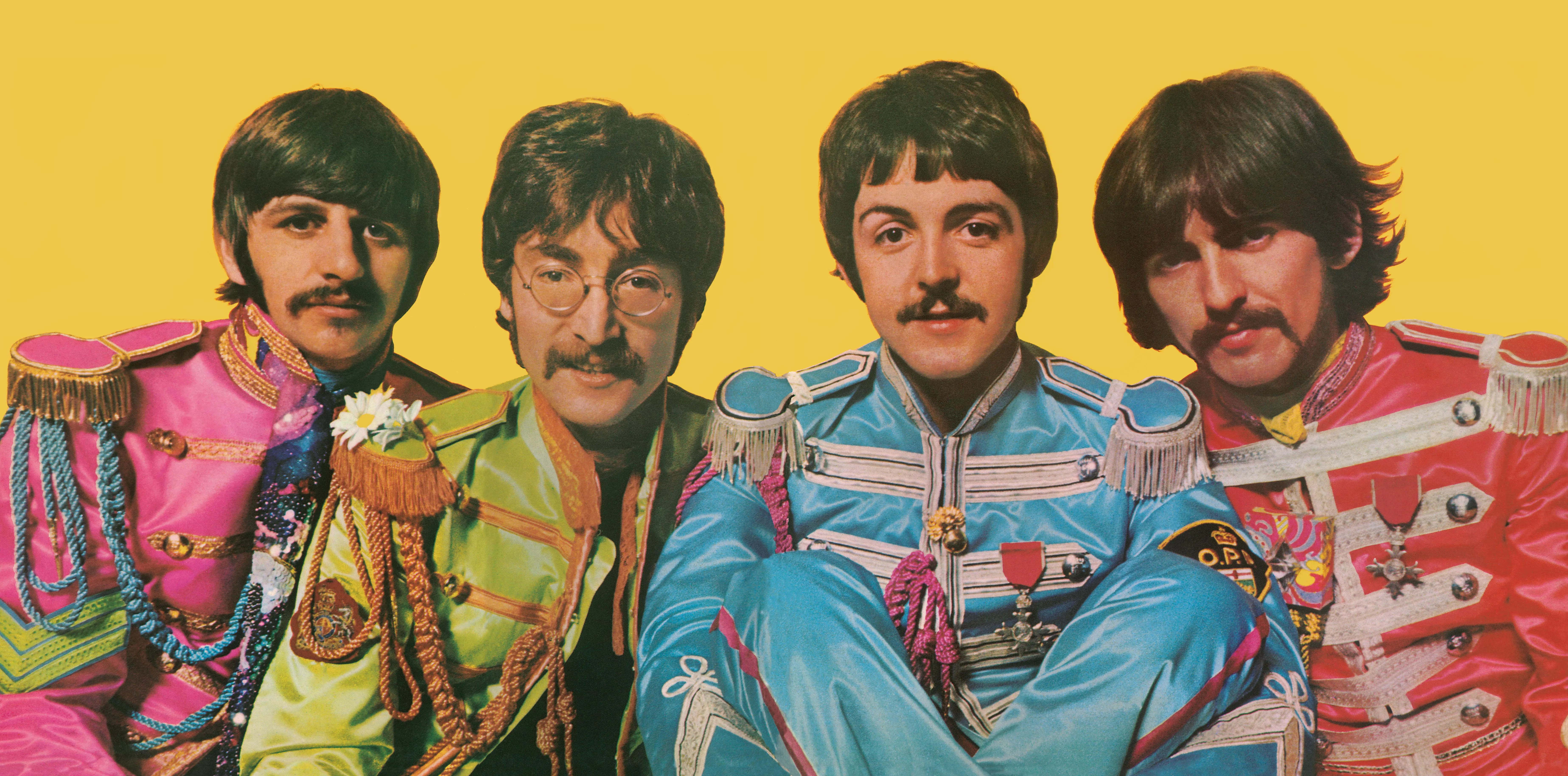 But what they primarily focused on during this period was recording material intended to fulfill their four-song commitment for the “Yellow Submarine” movie, something they weren't necessarily looking forward to doing. Therefore, they worked at recording these songs in a halfhearted but fun way, most evident in the song “All Together Now.” But what they primarily focused on during this period was recording material intended to fulfill their four-song commitment for the “Yellow Submarine” movie, something they weren't necessarily looking forward to doing. Therefore, they worked at recording these songs in a halfhearted but fun way, most evident in the song “All Together Now.”
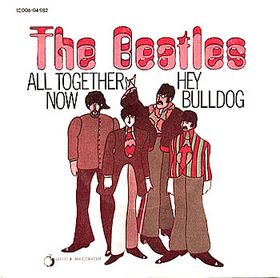 While the song hadn't reached a degree of popularity anything near the likes of being one of The Beatles' “greatest hits,” it did get released as a single in various countries such as France and Germany, even reaching #16 in The Netherlands. And, as mentioned in Ian MacDonald's book “Revolution In The Head,” the song was “trite enough to have been chanted for several seasons on English football terraces.” “I enjoyed it when football crowds in the early days would sing 'All Together Now,'” John Lennon stated in 1971. While the song hadn't reached a degree of popularity anything near the likes of being one of The Beatles' “greatest hits,” it did get released as a single in various countries such as France and Germany, even reaching #16 in The Netherlands. And, as mentioned in Ian MacDonald's book “Revolution In The Head,” the song was “trite enough to have been chanted for several seasons on English football terraces.” “I enjoyed it when football crowds in the early days would sing 'All Together Now,'” John Lennon stated in 1971.
Song Summary
“All Together Now”
Written by: John Lennon / Paul McCartney
- Song Written: May, 1967
- Song Recorded: May 12, 1967
- First US Release Date: January 13, 1969
- First US Album Release: Apple #SW-153 “Yellow Sumbarine”
- British Album Release: Apple #PCS 7070 “Yellow Submarine”
- US Single Release: n/a
- Highest Chart Position: n/a
- Length: 2:08
- Key: G major
- Producer: Geoff Emerick
- Engineers: Geoff Emerick, Richard Lush
Instrumentation (most likely):
- Paul McCartney - Lead and Background Vocals, Acoustic Guitar (1964 Epiphone Texan FT-79), Bass Guitar (1964 Rickenbacker 4001S), sound effects, handclaps
- John Lennon - Lead and Background Vocals, Harmonica (chromatic), ukulele, banjo, sound effects, handclaps
- George Harrison - Acoustic Guitar (1964 Gibson J-160E), backing vocals, sound effects, handclaps
- Ringo Starr - Drums (1964 Ludwig Super Classic Black Oyster Pearl), backing vocals, sound effects, handclaps
- Mal Evans - backing vocals, sound effects, handclaps
- Neil Aspinall - backing vocals, sound effects, handclaps
- other guests - backing vocals, sound effects, handclaps
Written and compiled by Dave Rybaczewski
|
IF YOU WOULD LIKE TO MAKE A DONATION TO KEEP THIS WEBSITE UP AND RUNNING, PLEASE CLICK BELOW!
Sign Up Below for our MONTHLY BEATLES TRIVIA QUIZ!
|